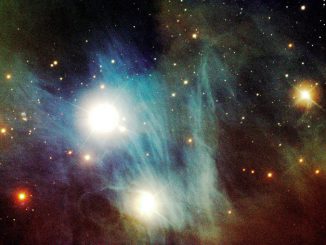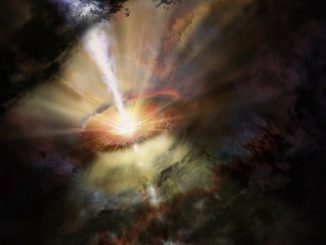
Starving black hole returns brilliant galaxy to the shadows
The mystery of a rare change in the behaviour of a supermassive black hole at the centre of a distant galaxy has been solved by an international team of astronomers using ESO’s Very Large Telescope along with the NASA/ESA Hubble Space Telescope and NASA’s Chandra X-ray Observatory. It seems that the black hole has fallen on hard times and is no longer being fed enough fuel to make its surroundings shine.








